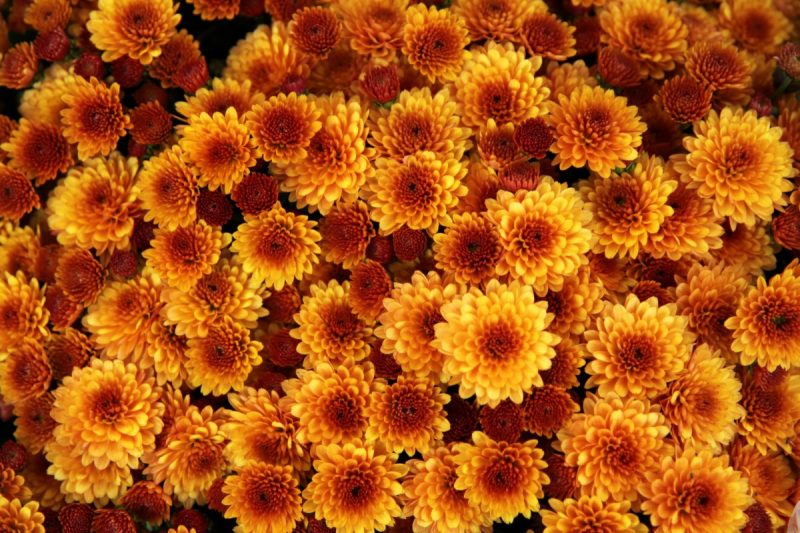September is upon us, and that means the temperatures will soon start falling, the cool breezes will blow, and homeowners across the Chicagoland area will need to start their early fall landscaping and gardening. Below is some information that can help you prepare your lawn and garden for fall to ensure its health and beauty all year round.
Lawn Care
Early September is the best time of year to seed your lawn with an appropriate mix of grass seed. You may choose to fill in any bare or thin spots, but you might also want to seed your entire lawn depending on your unique needs. If your lawn is brown and lifts off the ground easily, this is a sign that you may have grubs, which look like white larvae in the shape of the letter “C”. Be sure to check for these and use the appropriate treatment early in September or wait until the middle of June to use a pesticide called imidacloprid. Application during the fall will prove ineffective since the cool forces the grubs down into the ground and out of reach of any chemicals you might apply.
Caring for Plants in General
If you’ve been thinking of starting a compost pile but haven’t yet gotten around to it, there is no time like September. Things like dead leaves raked from your lawn and grass clippings make a great start, but be sure to add some soil, fertilizer, and water to get things moving along. September is also the perfect time of year to have your soil tested. Remember that you shouldn’t add anything to your soil until you know exactly what it needs; otherwise this can negatively affect the plants during the winter months and prevent growth come spring.
Trees and Shrubs
If you want to plant or relocate trees to improve or change your landscaping, it is important that you wait for them to change colors or drop their leaves completely. This means they have gone dormant and they will not experience the same level of shock during the transplant process, which helps to ensure their health. You should remember to water all of your larger trees and shrubs until the ground freezes completely, and this is especially true for evergreen trees and shrubs prone to winter burn due to lack of moisture.
Fruits, Vegetables, and Herbs
Late summer is one of the most abundant times of the year for your herbs, vegetables, and fruits. Keep close watch over your garden and check it every single day for ripened produce that needs harvesting. If crops like tomatoes or peppers are still ripening when the first frost threatens, you can prevent damage by covering them with light blankets until the frost has passed. Wait until after the first frost to harvest your leafy green vegetables like kale and Brussels sprouts for a better overall flavor and harvest your second crop of cool-weather produce like peas, spinach, and radishes that you planted last month. Finally, continue to snip herbs, but don’t harvest any that have gone to flower or seed.
Fall landscaping is important not only for improving your home’s aesthetic appeal during the fall months, but also for ensuring a healthy spring season filled with color. These September landscaping and gardening tips will help you keep your lawn, plants, trees, and shrubs healthy while improving the harvest from your fruits, vegetables, and herbs.


